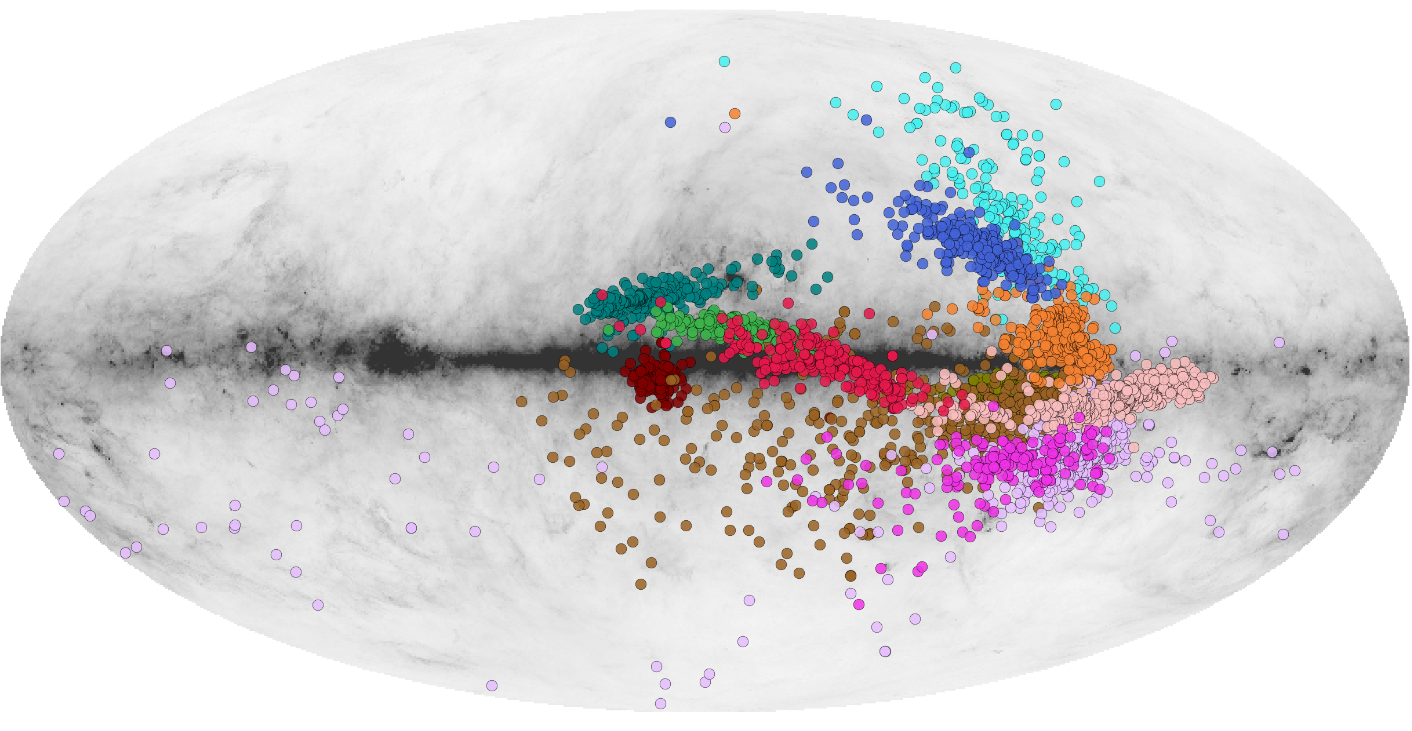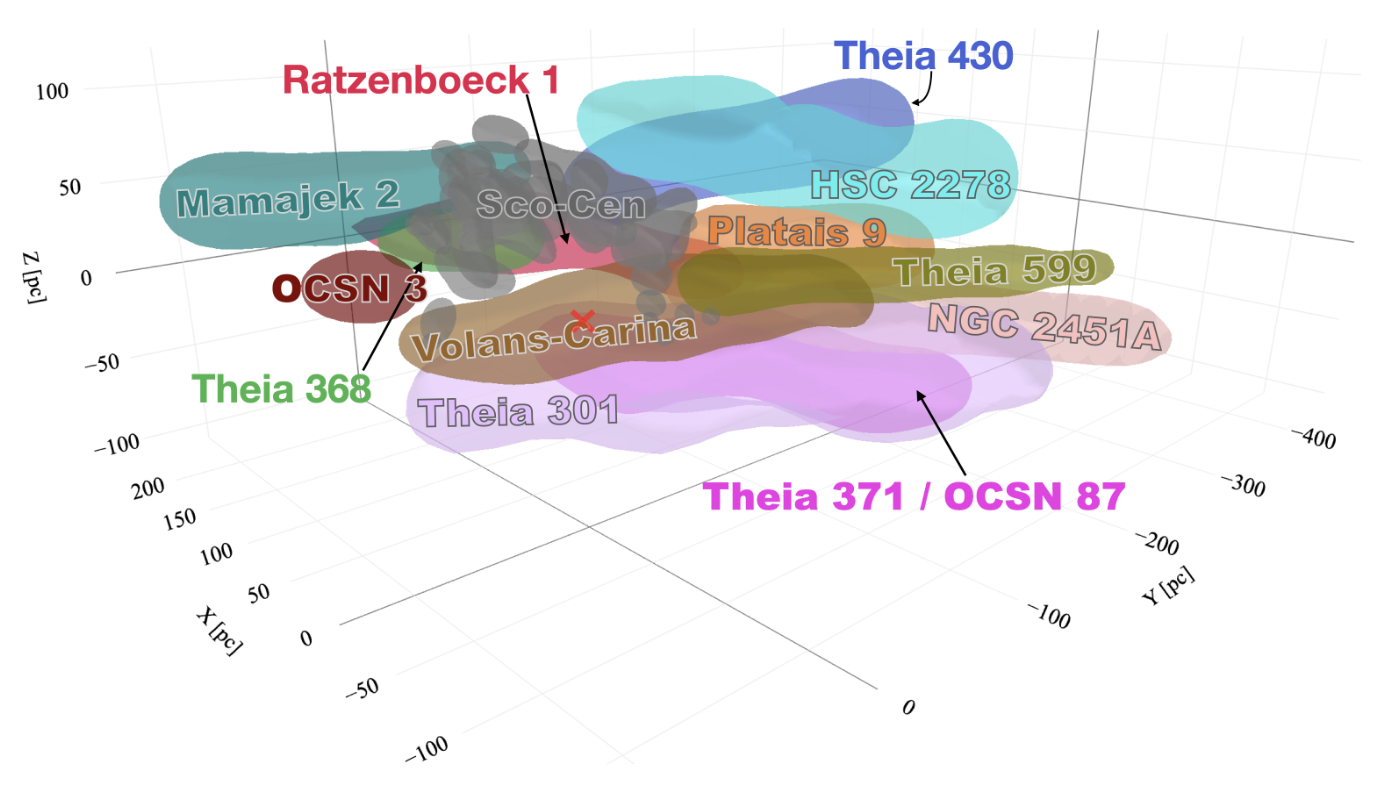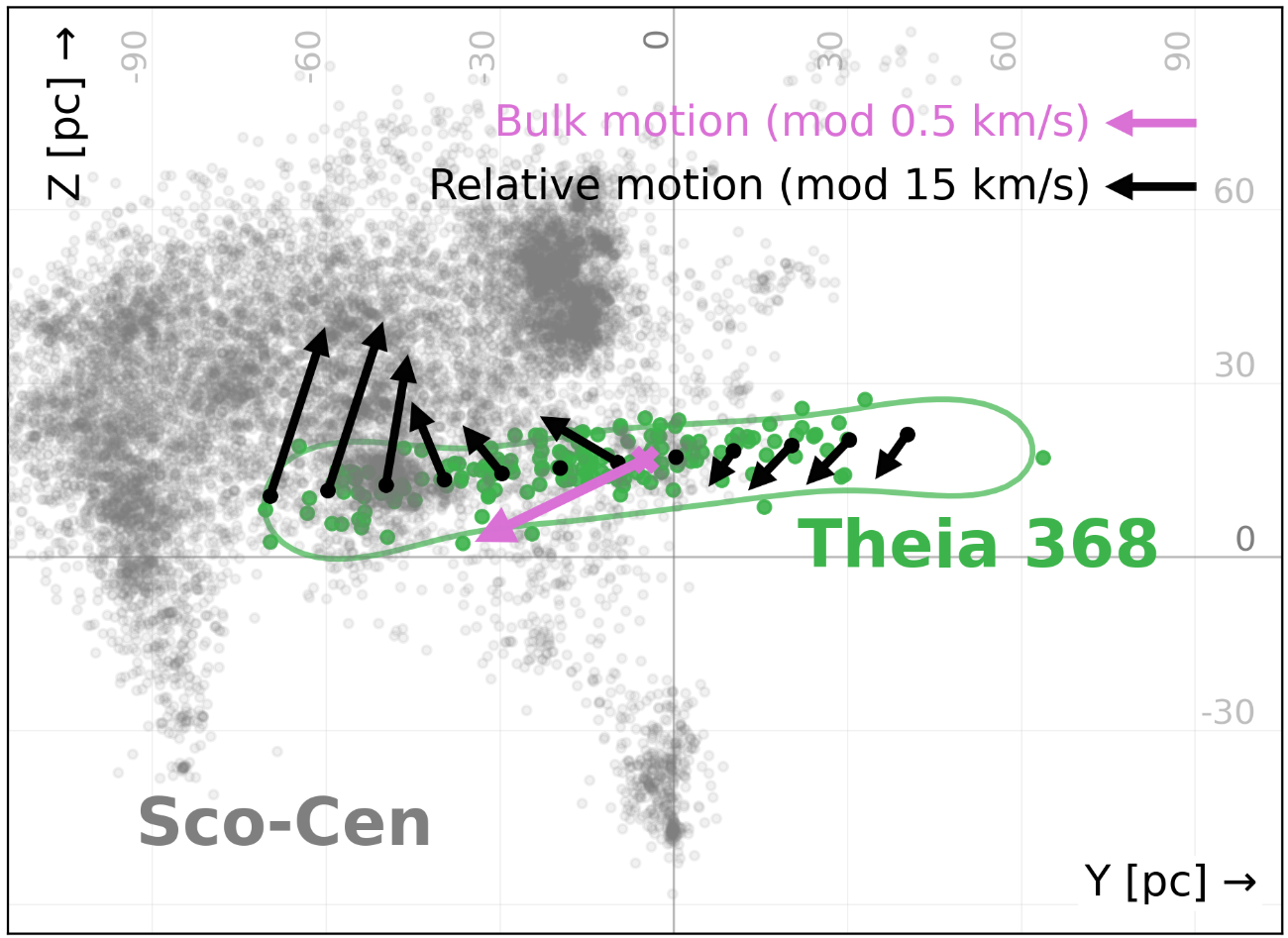
The Milky Way's disk is teeming with streams
Star Clusters, Paper Summaries
27 March 2025 | Reading time: 1 minute
It’s paper day! I’m a co-author on a new paper led by Dr Sebastian Ratzenböck at the University of Vienna. Sebastian used his SigMA clustering algorithm to analyse the clustering of stars in a box near to the Sco-Cen association of young stars.
Owing to how sensitive the SigMA algorithm is, we found that this region is full of a dozen streams of stars that formed together within the last few hundreds of millions of years. They are long, sparse, and everywhere:

The number of streams that Sebastian found is particularly remarkable, because it exceeds estimates from N-body simulations by one to two orders of magnitude. More work is needed to investigate more regions, but it seems that these streams of stars are much more common than previously thought.
One other particularly exciting thing in the paper is the stream Theia 368. It’s a stream that’s currently passing through the Sco-Cen association and molecular clouds. We found that the passage is actively tearing the stream apart - the part of the stream closest to Sco-Cen clearly has a different direction of movement:

As far as I’m aware, this is the first ever direct observation of a star cluster being torn apart by a molecular cloud. To explain the relative rarity of old star clusters in the Milky Way’s disk, molecular clouds were proposed as a disruption mechanism for star clusters by Lyman Spitzer in 1958. This is a widely accepted theory for how star clusters are destroyed. However, I don’t think that anyone else had ever seen it happening until now!
You can check out the paper here. There’s also a really cool interactive figure showing the location of the streams.